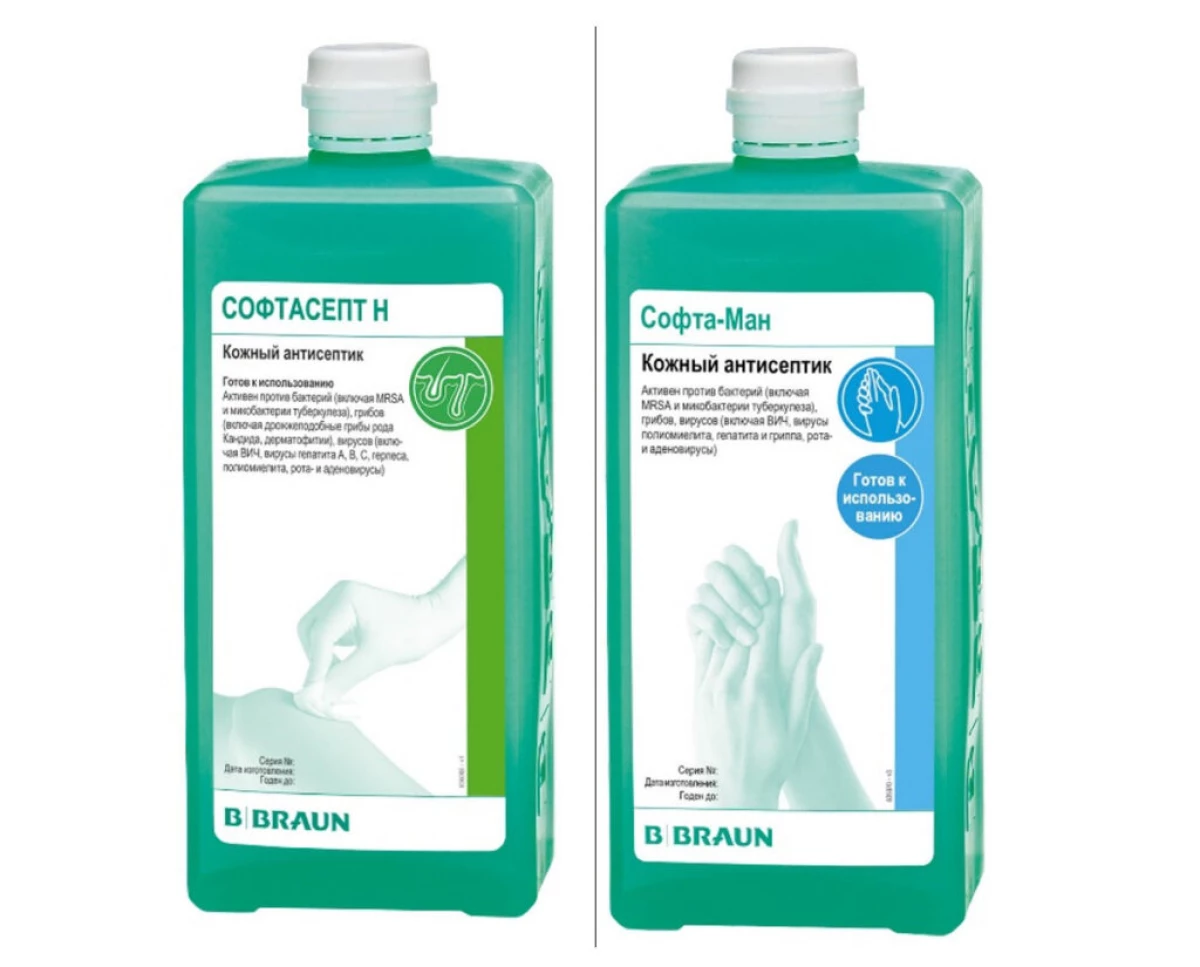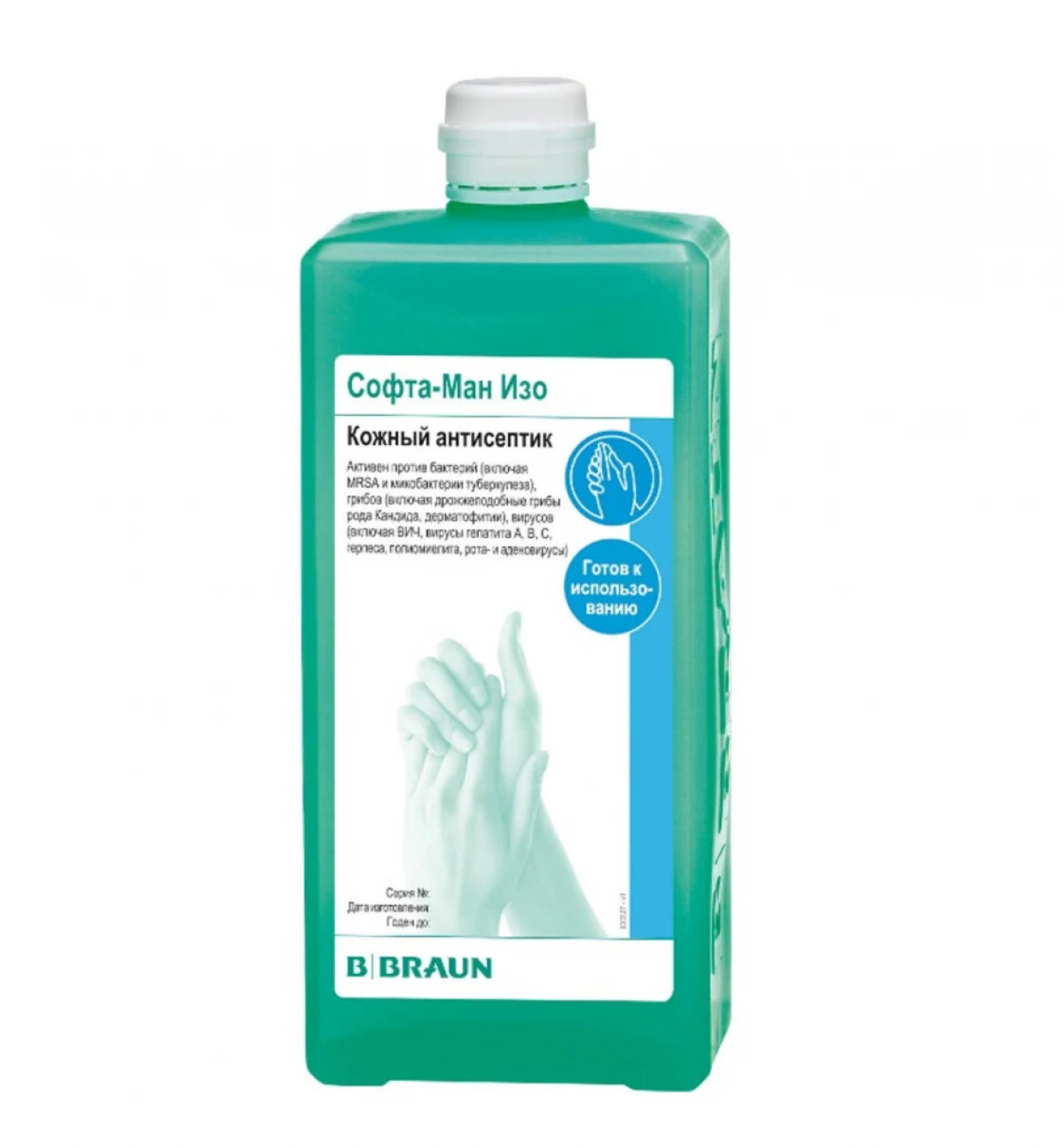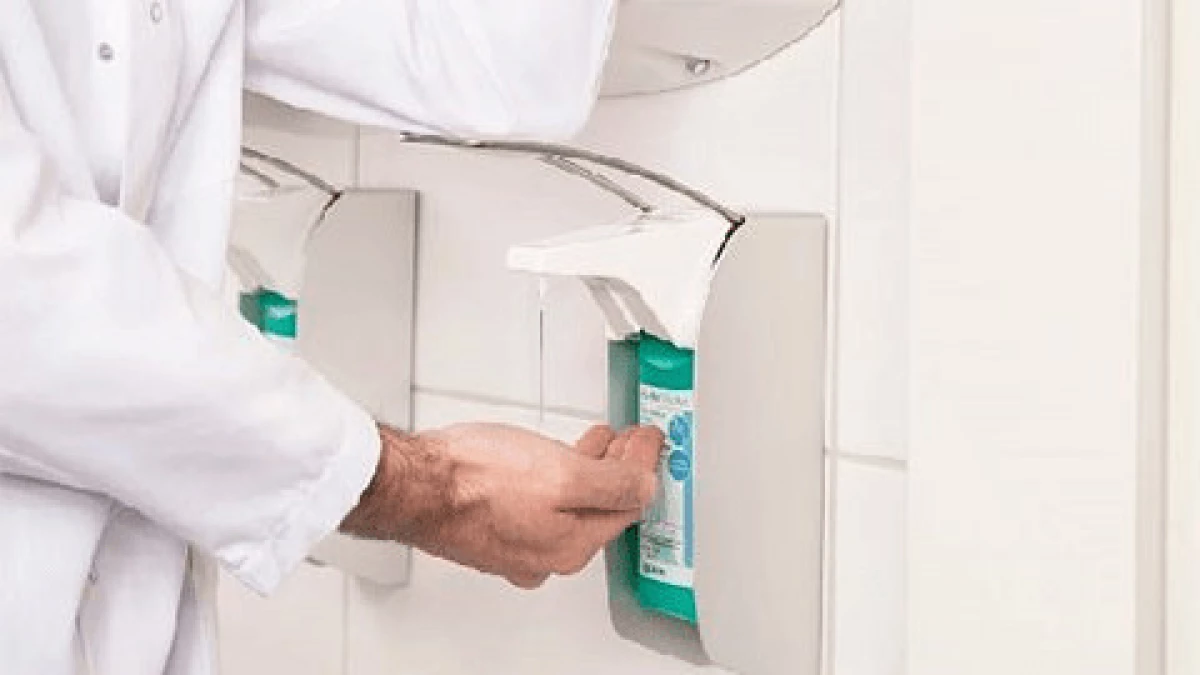New recommendations on the hygiene of the hands of health workers and disinfection of the skin of patients
In order to reduce the risk of the occurrence of the ISMP in patients of hybridizations, as well as professional infectious diseases, the medical staff, Rospotrebnadzor developed new methodological instructions MU 3.5.1.3674-20 "Disinfection of the hands of medical workers and the skin of patients in the provision of medical care." The document contains criteria for selecting skin antiseptics, as well as recommendations for their use. Consider the main innovations that brought the document into the work of the medical institutions, but for beginnings we will turn to the general requirements for antisepticams, as well as their characteristics.
The actors of the skin antiseptics may be (ethyl, isopropyl, propyl), as well as active substances from other groups of chemical compounds. Alcohol-containing skin antiseptics have, as a rule, optimal efficacy at the following alcohol concentrations:
- ethyl - at least 70%;
- isopropyl - at least 60%;
- Propyl - at least 50%.
In the compositional compositions of the skin antiseptics, the optimal total content of alcohols should be 60 - 70%.
In addition, the composition of the skin antiseptics may include quaternary ammonium compounds, polyhexametyleneguanidines, chlorhexidine Bigluconate, octatenidine hydrochloride, octatenidine dihydrochloride, tertiary alkylamines, iodofores, phenoxyethanol, etc.
Skin antiseptics must respond to the following characteristics:- short processing time;
- a fairly wide range of antimicrobial activity;
- Safety for personnel and patients;
- Convenient form of release form.
All above the listed criteria are satisfied by the antiseptics of the German company B. Brown "Softasept N", "Softa-Mans from", "Softa-Man". In each of these drugs, the concentration of alcohols corresponds to the current requirements, which ensures the death of gram-positive and gram-negative bacteria, pathogenic fungi, viruses, including excithelutes of the IPMP. Antiseptic means do not contain allergenic fonders, provide hand care, do not violate the barrier properties of the skin. B. Brown company produces antiseptics in bottles of various sizes, incl. And a small volume, which allows medical personnel with ease to place the means for hand hygiene in the workwear pocket.

In the guidelines for the first time, the classification of skin antiseptics is given, which is based on the principle of grouping funds for the purpose and scope of application. Allocate antiseptics of three classes: A, B and B.
Class A. Skin Antiseptics This group of funds is designed to process the operating field, elbow donors, injecting fields, locations of the puncture needle or installation of the catheter, including the use of sterile systems for infusion and hemotransphus. These applications must be clearly designated in the instructions for the skin antiseptic.
To process the operating field, the point of entering the puncture needle, the installation of the peripheral or central venous catheter is carried out only by the method of double wiping, sequentially using two separate sterile napkins or two sterile cotton swabs, abundantly moistened with skin antiseptic class A.
If skin covers have visible contaminants, then they first be cleaned carefully, and after that they are processed. When processing intact skin before the operation, the antiseptic is applied by concentric circles from the center to the periphery, and in the presence of a purulent wound - on the contrary, from the periphery to the center. To disinfect the operational field, it is preferable to use the means with the dye to make it easy to visually determine the boundaries of the processed section.
According to the methodological directions, the skin of the injection field can be processed in the following ways:- by simultaneously wiping with a sterile napkin or a tampon, a pre-moistened antiseptic;
- irrigation of the skin antiseptic from the bottle with a sprayer;
- Using ready-to-use napkins in individual factory packages impregnated with the skin antiseptic.
The amount of means required for processing, as well as the exposure time is determined by the instructions for the use of a particular preparation. After the processing is completed, it is important to wait at least 30 seconds so that the skin surface can dry.
For children under the age of 7 years, it is recommended to use Class A-based skin antiseptics based on ethyl alcohol without adding other active ingredients. For the skin of newborns with a mass of the body, more than 1500 g is used ethyl alcohol 70%. To provide medical assistance to a newborn with a body weight, less than 1500 g use antiseptic drugs, which, after exposure, washed off by a sterile napkin impregnated with water for injections.
Class B. Skin Antiseptics are designed to handle the hands of surgeons of any specialties, anesthesiologists-resuscitations, obstetricians-gynecologists, endoscopists, neonatologists, operating nurses, nurses-anesthetists, midwives, as well as other specialists who are directly involved in the performance of operational and other Invasive interventions.
Class B Skin Antiseptic Processing Conduct before performing any operations, as well as before performing the following manipulations:
- catheterization of trunk vessels;
- Installation or replacement of an invasive or drainage device;
- puncturing tissues, cavities, vessels, spinal channels;
- sterile endoscopic manipulations;
- receiving childbirth;
- Care and procedures in resuscitation and intensive care departments for newborns.
Before using the antiseptics of a class used hand, wrists and forearms to elbows inclusive for two minutes with warm flowing water with liquid soap without antimicrobial components. The use of brushes is not recommended to avoid traumatizing the skin and its appendages of tough bristles. Then the hands are dried with dyeing movements of a single sterile tissue napkin or a sterile towel.
After that, proceed to the processing of the skin antiseptic class B of hands, wrists and forearm to elbow inclusive. The skin antiseptic is applied by separate portions, distributing evenly and thoroughly rubbed into the skin, maintaining it in a wet state during the processing time. The amount of skin antiseptic required for one processing, multiplicity of processing and exposure time must comply with the instructions for the use of a particular preparation.
Class V. Skin antiseptics are used for hygienic treatment of the hands of health workers and support staff at all stages of medical care, as well as for patients and visitors of the medorganization.
According to the requirements of sanitary legislation, the handling of the hand of the class in the class B is carried out in the following cases:
- before and after direct contact with the patient;
- After contact with biological fluids, secrets or excretions of the body, mucous membranes, bandages;
- Prior to contact with invasive equipment and products, as well as before performing invasive procedures, with the exception of those that were specified in the testimony for the processing of class B antiseptics;
- After contact with medical equipment and other objects in close proximity to the patient;
- When moving from a more contaminated microflora, the patient's body portion is less contaminated when providing medical care and patient care;
- Before putting on medical gloves and after their removal.
Class B Skin Antiseptics, which do not contain alcohols, but with detergent properties are used for complete or partial sanitary treatment of patients's skin. It is designed to remove contaminants, as well as reducing the number of transient microflora. It is performed according to the testimony and in no case replaces hygienic procedures in patient care, is not an alternative to washing with water with soap.
Sankling is carried out when entering the department, on the eve of the operational intervention, as well as as a component of the patient's care. The entire surface of the body, or a separate section of the skin wipe the tampon, moistened with a skin antiseptic. You can use ready-to-use napkins impregnated with special antiseptic means.
For your information. How to take into account the classification of antiseptics when conducting procurement for the needs of health institutions, if classes are not specified in the manufacturers of manufacturers of Dissensers? It should be understood that absolutely all disinfectants in assessing their antimicrobial activity until 2021 were investigated in accordance with the management of P 4.2.2643-10 "Methods of laboratory research and testing of disinfectory tools for evaluating their effectiveness and safety." Since 2021, disinfectological examination is conducted on the basis of the leadership of R 4.2.3676-20. Documents contain the effectiveness criteria specified in the classification that correlated with a particular sphere of application of the antiseptic. Therefore, in the technical task for the tender, it is sufficient to indicate for what purposes should this or another antiseptic agent should be approached.

Please note that many modern antiseptics have a wide range of applications.
The same tool can be used as an antiseptic class A, B and B, which simplifies the work of the medical unit.
So, for example, Softasept H antiseptics, "Soft-Mans", "Soft-Man" are suitable for hygienic and surgical handling, disinfecting the skin of patients during various medical manipulations.
Features of the hygiene of the hands of medical personnel.According to the new rules of hand washing, soap is not a replacement of skin treatment with an antiseptic. At the same time, for hygienic handling of hands, soap and alcohol-containing antiseptic should not be used together.
When choosing a soap, you must pay attention to its properties. Optimally, if a means of hypoallergenic, without artificial dyes, has a neutral pH level, such as, for example, Softskin soap.
Hygienic handling is carried out in a way of rubbing in the skin of the hands of the hands of the antiseptic agent in the amount recommended by the instructions for use, processing the tips of the fingers, the skin around the nails, between the fingers.
In the course of processing it is necessary to maintain hands in a wet state.
The duration of the procedure is determined by the manufacturer's recommendations.
Hand washing with soap is necessary to remove contamination and concomitant reduction of microbial hand contamination. After washing your hands dried, grinding them with a clean towel or a napkin of one-time use. Paper towels of single use should have sufficient hygroscopicity, density and not to leave after using visible fibers on the skin of the hands. No electrical dryers should be applied.
Features of the hygiene of the hands of patients and visitors clinics.Patients and visitors to the clinics are required to carry out hygienic treatment of hands using soap and water, or alcohol-containing antiseptics in the following cases:
- before and after contact with damaged skin sites, dressings, mucous membranes used by medical products;
- at the entrance to the ward;
- before leaving the chamber;
- before eating;
- After visiting the toilet.
Features of using dispensers for antiseptics.

The use of mechanical or sensory dispensers for antiseptics significantly reduces the risk of cross-contamination of the hands of medical workers and patients, excluding or minimizing the contact of the hand-treated arms with the device.
Top the new portion of the antiseptic or soap into the dispenser with the remnants of the means is strictly prohibited. Dispensers of single use are not subject to reuse.
When using a dispenser with a filling vial, it is filled with a new portion of the antiseptic or soap only after disinfection, washing with water and drying.
Skin antiseptics should be maximum available. Dispensers are placed at the entrance to the office, chambers, cabinets, toilets, other rooms of high epidemiological risk. In departments with high patient care intensity, dispensers should be located at the patient's bed. Dispensers for soap and napkins are located in close proximity to the sinks, at a distance of no more than 40 cm from the mixer.
The system to ensure efficient hand disinfection in the clinic.Since the hands are the leading factor of the ISMP transmission, then the administration of the Municipalization and the hospital epidemiologist are obliged to pay special attention to the activities of the formation of personnel and patients to hygienic measures.
Effective hand disinfection system in the clinic includes:
- the appointment of persons responsible for the implementation of the system of measures and control their execution;
- the calculation of the required amount of skin antiseptics and accounting for their consumption;
- financing the costs of purchasing in sufficient skin antiseptics, soap, dispensers, dispensers, leather care products, towels, single-use napkins;
- development and approval of orders, instructions, cops on hand hygiene;
- systematic training of patients and visitors to hand processing rules, including using all available fundamental information;
- systematic training of medical personnel with hand processing rules upon admission to work and further at least 1 time per year, as well as when making changes in the scheme and hand processing rules, according to the results of an audit or production control;
- Audit of compliance with the methods of disinfection of hands and microbiological control of processing efficiency.
The indicators of high-quality hygienic treatment of hands are the absence of vegetative forms of sanitative microorganisms, vegetative forms of pathogenic and conditionally pathogenic bacteria, and after processing the hands of surgeons - the absence of any types of microorganisms.
More information about topical measures for the prevention of the ISMP, the organization of the san-epidem of the regime and the conduct of disinfection activities can be found on the page of my blog in Instagram.
I liked the article - share it in social networks. Share your opinion and communicate in the comments.
We remind you that you can offer a topic for publishing in the section "I want an article" and exchange experience in the section "Question by a specialist."
If you want to share your experience, you have a useful material for publishing - write to us [email protected]
Do you like social networks? Join the team like-minded people.fb vk insta
